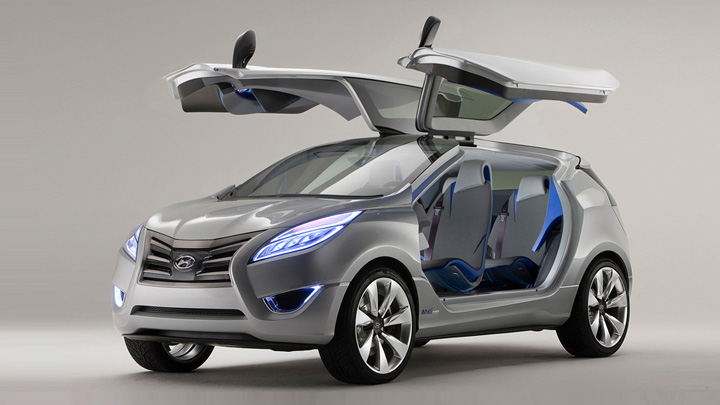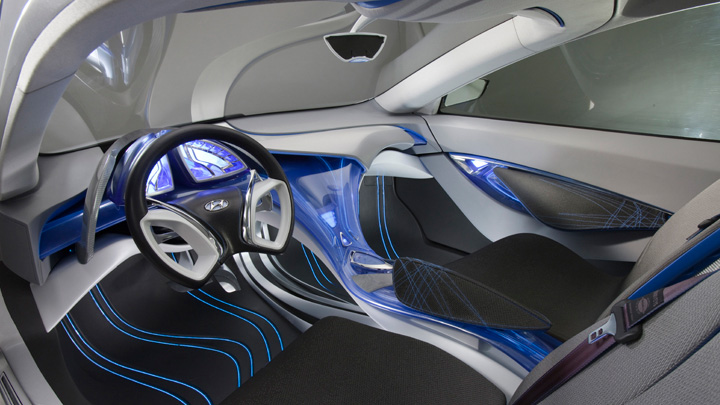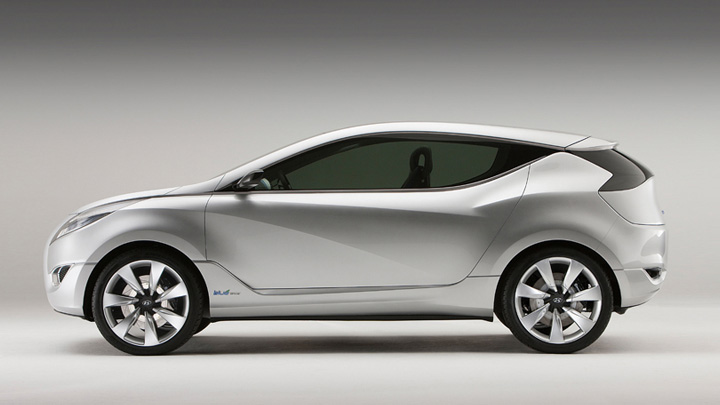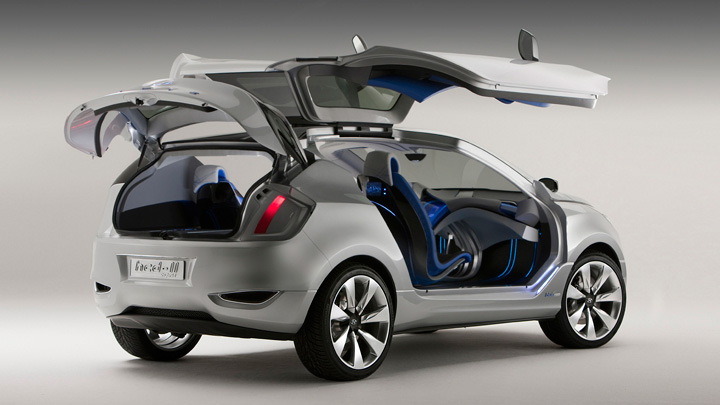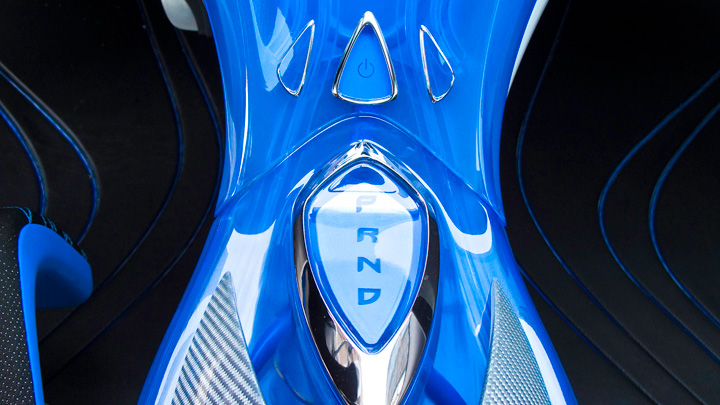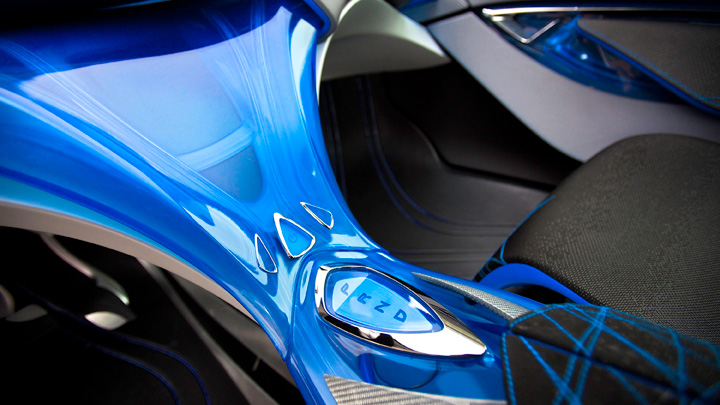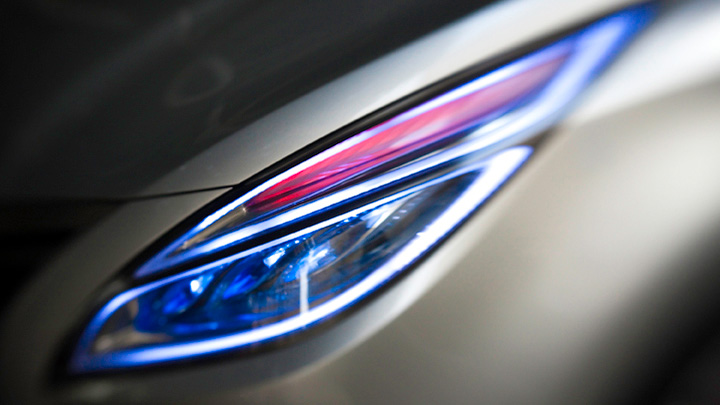Hyundai’s all-new, homegrown Hybrid Blue Drive architecture helps define the Nuvis concept. Hyundai’s proprietary parallel hybrid drive system mates the already fuel-efficient 2.4-liter Theta II engine to a 6-speed automatic transmission and a 30 kW (205 N-m) electric motor for maximum fuel economy. Hybrid Blue Drive has an all-electric mode and a parallel drive mode, meaning that the wheels are turned by power coming directly from the gasoline engine, or the electric motor, or both together, as conditions demand. This parallel hybrid drive architecture will serve as the foundation for future Hyundai hybrid drive vehicles, starting with the next-generation Sonata in the United States. To maximize fuel economy, all of the Theta II’s major driveline and cooling system components have been optimized to reduce friction, while the crankcase has been filled with low friction oil.
Engine management software automatically shuts off the engine when the vehicle comes to a halt, cutting emissions to zero. The engine automatically restarts when pressure is reapplied to the accelerator pedal due to the Integrated Starter Generator (ISG). To further reduce fuel consumption, the Theta II’s engine management software, which governs injection pressure, engine cycle timing and exhaust retreatment rates, has been revised. This control strategy assures that maximum efficiency is achieved during gentle acceleration, while greater power is immediately available during full acceleration.
During deceleration, regenerative braking also comes into play to help conserve energy. To ensure that the engine runs at lower RPMs, the top three gear ratios in the transmission have been extended. Fuel economy is further optimized through the latest electric motor-assisted steering system which reduces power drain and low resistance tires.
